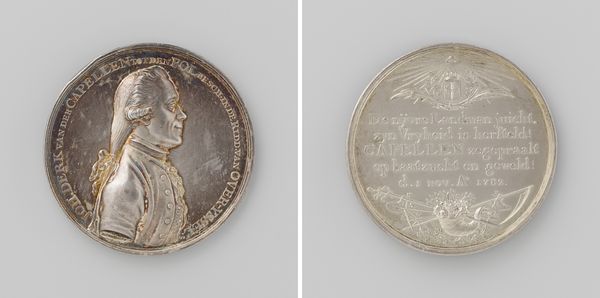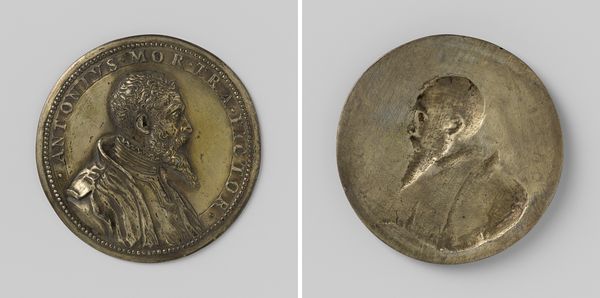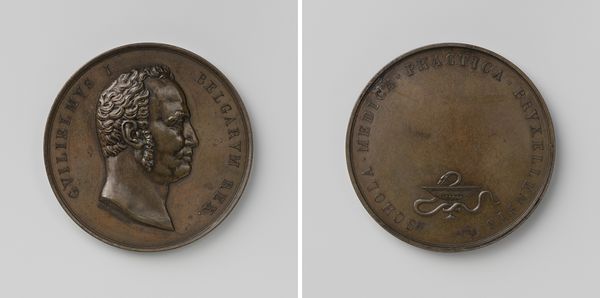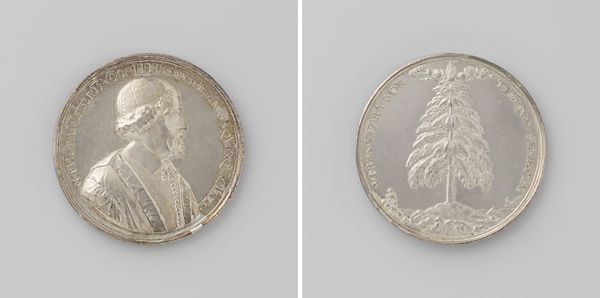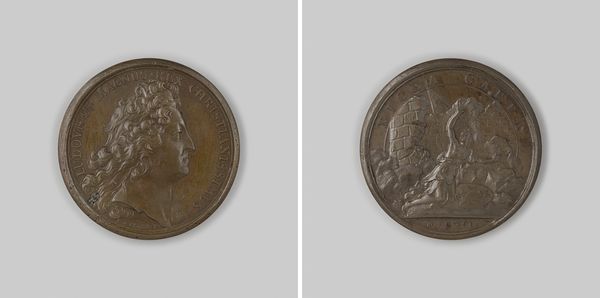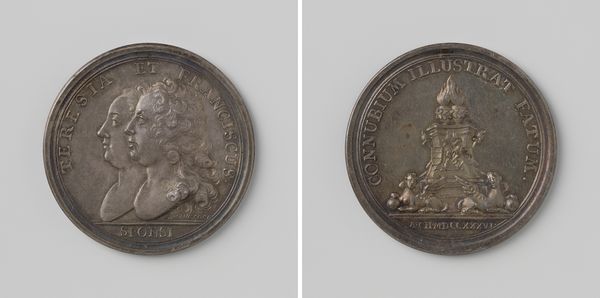
Gustaaf Willem, baron van Imhoff, gouverneur-generaal van Nederlands-Indië vertrekt uit Amsterdam 1742
0:00
0:00
metal, engraving
#
portrait
#
baroque
#
metal
#
engraving
Dimensions: diameter 7.6 cm, weight 22.18 gr
Copyright: Rijks Museum: Open Domain
Curator: A captivating image – a silver engraving, to be precise. This portrait medal, dating back to 1742, captures Gustaaf Willem, Baron van Imhoff, Governor-General of the Dutch East Indies, at his departure from Amsterdam. Editor: Stark. A striking contrast between light and shadow that imparts an immediate sense of gravity. There's a lot of history compressed into such a small metallic space, a feeling of institutional power frozen in time. Curator: Absolutely. Notice how the inscription, elegantly circling Van Imhoff's profile, doesn't merely identify him; it elevates the composition. The crispness of the lines and lettering underscores the man’s prestige, a self-fashioned icon in the Baroque tradition. Editor: That circular inscription is deliberately imposing. A colonial administrator commemorated in metal at the start of his journey, it prompts one to question the values and systems of domination it served to uphold. Who was this man? How did he perceive himself? How was he perceived by the people he ruled over? Curator: These are the complex questions we bring to historical portraits, certainly. What Holtzhey, the artist, gives us here is a masterfully rendered image of authority and resolution. Note how van Imhoff's confident bearing echoes ideals of governance celebrated in Dutch portraiture of the time. The sharp, precise lines highlight the confidence of the Dutch empire and those at its helm. Editor: It is a complex, multifaceted history that warrants an ongoing engagement, a refusal to shy away from discussions of imperialism and resistance, because without that we risk allowing the stark, seemingly benign portraits such as this to lull us into a kind of complacent visuality. Curator: You are right to remind us that representation involves responsibility. The portrait, viewed today, resonates differently because we see it not only as an art object but also as a complex historical document reflecting complicated values. Editor: And interrogating these seemingly fixed portraits remains so crucial, for how else can we even begin to envision different ways forward? Thank you for giving me the chance to dwell on this intriguing work today!
Comments
No comments
Be the first to comment and join the conversation on the ultimate creative platform.
